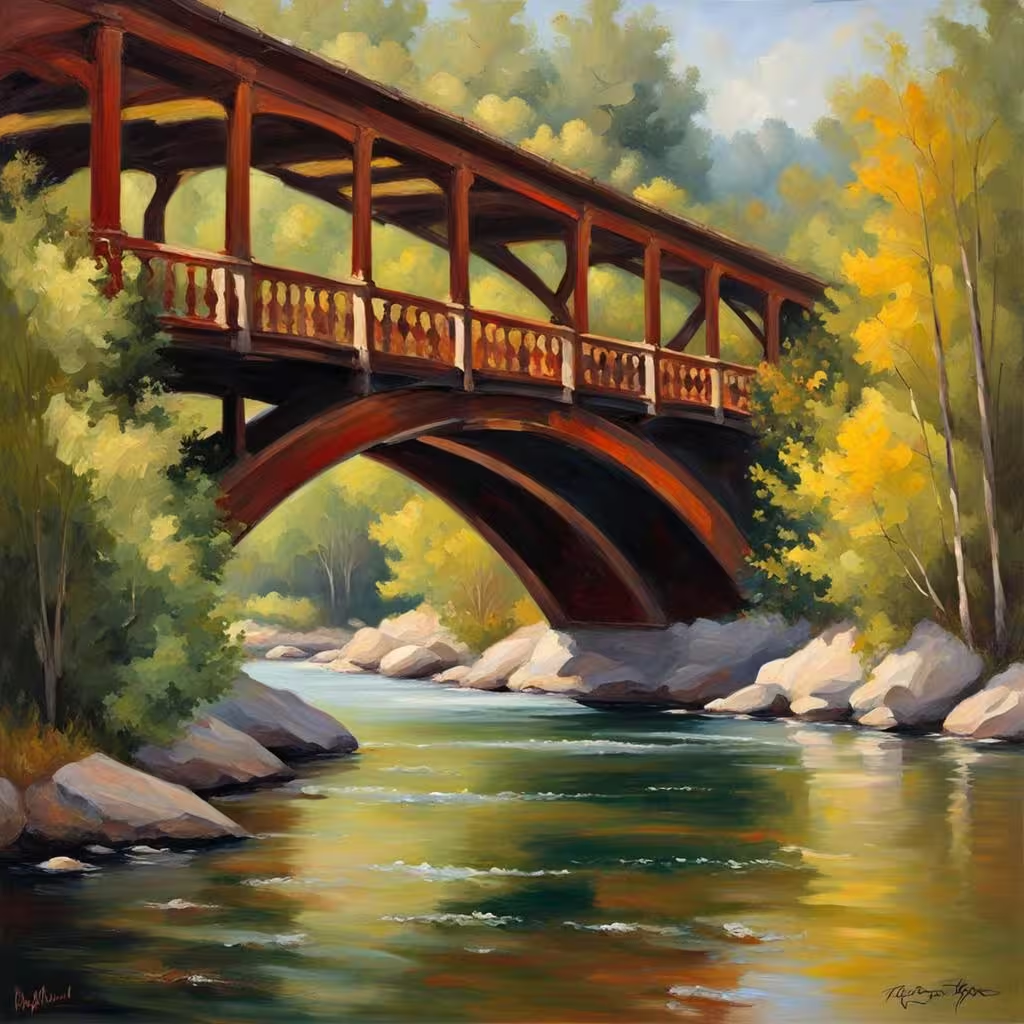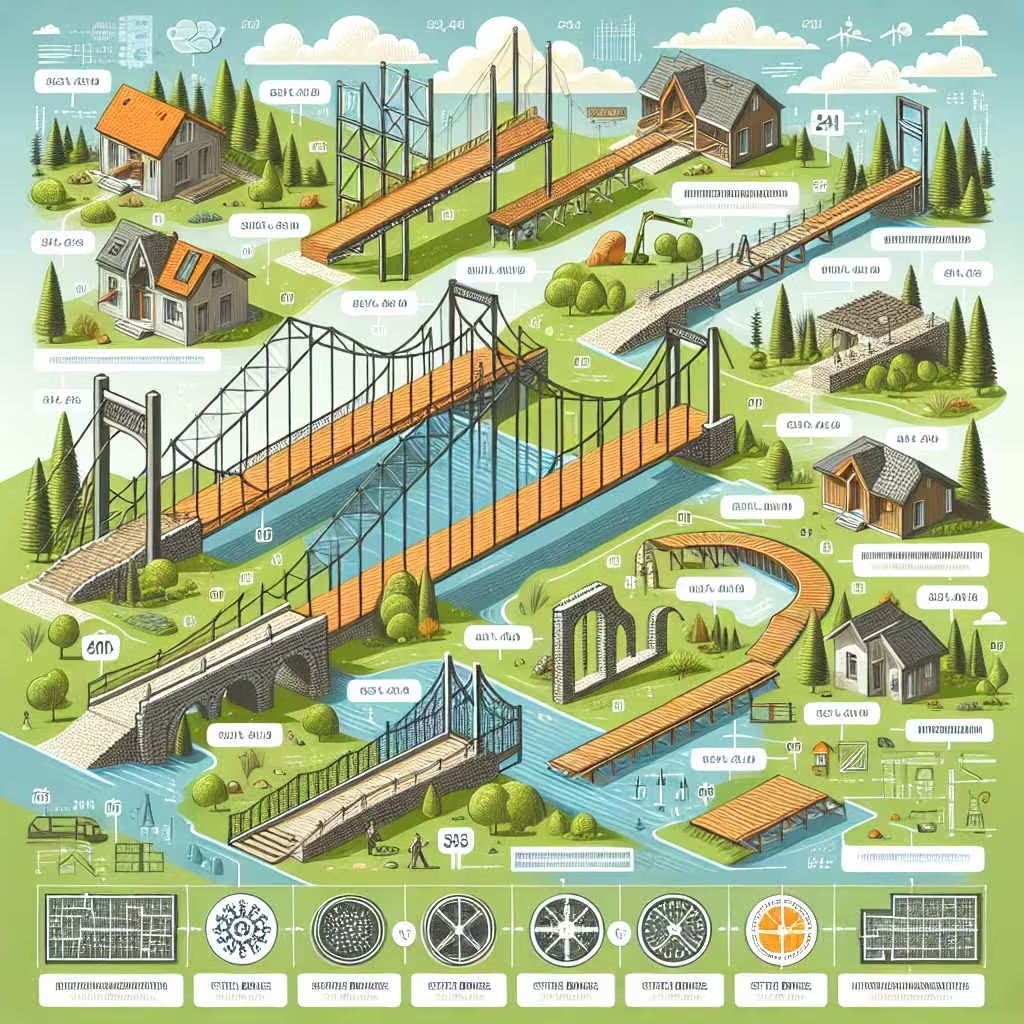As a homeowner with extensive acreage or a property divided by water, choosing the right bridge is crucial for safety, accessibility, and peace of mind. A well-designed bridge not only connects different parts of your land but also enhances your property’s value and functionality. Having spent years researching and advising on private property infrastructure, I’ve seen firsthand how the right bridge can transform a challenging landscape into a cohesive, easily navigable space. In this article, we will explore this Buyers Guide for Private Property Bridges to help you make the best choice for your land.
Reader Disclosure
Jump to:
Understanding Private Property Bridges
Private property bridges serve as essential connectors, allowing homeowners to access all parts of their land safely and efficiently. These structures are particularly important for properties with streams, ravines, or other natural barriers. Unlike public bridges, private bridges are the responsibility of the property owner, making it crucial to choose wisely.
Types of Private Property Bridges
There are several types of bridges suitable for private properties, each with its own advantages and considerations. Let’s explore three popular options:
1. Beam Bridges
- Simple, cost-effective design
- Ideal for shorter spans (typically up to 80 feet)
- Can be made from various materials including wood, steel, or concrete
2. Arch Bridges
- Aesthetically pleasing and structurally efficient
- Suitable for longer spans
- Excellent load-bearing capacity
3. Truss Bridges
- Highly stable and capable of supporting heavy loads
- Can span longer distances than beam bridges
- Often used for vehicular traffic on private properties
Factors to Consider When Choosing a Bridge
When selecting a bridge for your private property, several key factors come into play:
- Span Length: The distance your bridge needs to cover is a primary consideration. Longer spans may require more complex bridge types.
- Load Capacity: Consider the heaviest vehicles or equipment that will need to cross the bridge. This could range from pedestrians to heavy machinery.
- Environmental Conditions: Factors like soil type, water flow, and potential for flooding can impact your bridge choice and design.
- Aesthetics: The bridge should complement your property’s landscape and architectural style.
- Budget: Costs can vary significantly depending on the bridge type, materials, and installation method.
- Maintenance Requirements: Some bridge types require more frequent maintenance than others.
- Local Regulations: Check with your local authorities about any permits or specific requirements for private bridges.
Detailed Look at Popular Bridge Types
Let’s dive deeper into the three popular bridge types mentioned earlier:
Beam Bridges
Beam bridges are the simplest and most common type of bridge. They consist of a horizontal beam supported at each end by piers. The weight of the bridge and its load pushes straight down on the piers.
Advantages:
- Cost-effective for shorter spans
- Simple construction process
- Suitable for various materials (wood, steel, concrete)
Considerations:
- Limited span length (typically up to 80 feet)
- May require additional support for longer spans
Arch Bridges
Arch bridges use an arch as their main structural element. The arch distributes the weight evenly, making these bridges strong and capable of spanning longer distances than simple beam bridges.
Advantages:
- Aesthetically pleasing
- Can span longer distances than beam bridges
- Excellent load-bearing capacity
Considerations:
- More complex construction process
- May be more expensive than beam bridges for shorter spans
Truss Bridges
Truss bridges use a series of triangular units to distribute the load across a larger area. This design makes them incredibly strong and capable of spanning long distances.
Advantages:
- Can span long distances
- Excellent load-bearing capacity
- Ideal for vehicular traffic
Considerations:
- More complex design and construction
- May have higher initial costs

The Bridge Selection Process
Choosing the right bridge for your property involves several steps:
- Assess Your Needs: Determine the primary purpose of the bridge (pedestrian, vehicular, or both) and the expected traffic volume.
- Site Evaluation: Conduct a thorough site assessment, including soil testing and hydrological studies if necessary.
- Consult Professionals: Engage with structural engineers and bridge design specialists to get expert advice.
- Consider Long-term Costs: Factor in not just the initial construction costs, but also long-term maintenance and potential replacement costs.
- Review Local Regulations: Ensure your chosen bridge design complies with local building codes and environmental regulations.
- Get Multiple Quotes: Obtain quotes from several reputable bridge manufacturers or contractors to compare options.
- Plan for Installation: Determine whether you’ll need professional installation or if it’s a DIY project (for smaller bridges).
Maintenance and Safety Considerations
Proper maintenance is crucial for ensuring the longevity and safety of your private property bridge. Here are some key points to keep in mind:
- Regular Inspections: Conduct visual inspections at least annually, and have a professional inspection every 3-5 years.
- Cleaning: Regularly clean the bridge deck and remove any debris that could cause damage or impede drainage.
- Rust Prevention: For metal bridges, apply rust-inhibiting paint or coatings as needed.
- Structural Repairs: Address any structural issues promptly to prevent further damage.
- Load Limits: Clearly mark and adhere to the bridge’s load limits to prevent overloading.
- Weather Considerations: Be aware of how extreme weather conditions might affect your bridge and take necessary precautions.
Environmental Impact and Sustainable Options
When planning your private property bridge, consider its environmental impact:
- Eco-friendly Materials: Explore sustainable materials like recycled steel or responsibly sourced timber.
- Minimal Disruption: Choose designs and construction methods that minimize disruption to the local ecosystem.
- Permeable Surfaces: Consider permeable bridge decking to allow natural water flow.
- Wildlife Considerations: Ensure the bridge design allows for the free movement of wildlife, especially if spanning a waterway.
Cost Considerations
The cost of a private property bridge can vary widely based on several factors:
- Bridge type and design complexity
- Span length and width
- Materials used
- Site accessibility and preparation requirements
- Local labor costs
- Permitting and engineering fees
As a rough estimate, costs can range from $5,000 for a simple pedestrian bridge to over $100,000 for a large, vehicle-capable bridge. Always get detailed quotes from multiple providers to ensure you’re getting the best value for your specific needs.

People Also Ask
Do I need a permit to build a private bridge on my property?
In most cases, yes. Check with your local building department or county office for specific requirements in your area.
How long do private bridges typically last?
With proper maintenance, a well-constructed private bridge can last 50 years or more, depending on the materials used and environmental conditions.
Can I build a bridge myself?
While it’s possible to build small pedestrian bridges as DIY projects, larger or vehicle-bearing bridges typically require professional design and construction to ensure safety and compliance with local regulations.
How often should I have my private bridge inspected?
It’s recommended to have a professional inspection every 3-5 years, with regular visual inspections conducted by the property owner annually.
What’s the most cost-effective type of bridge for a short span?
For shorter spans (up to 80 feet), a beam bridge is often the most cost-effective option due to its simple design and construction process.
Conclusion
Choosing the right bridge for your private property is a significant decision that impacts safety, accessibility, and property value. By carefully considering factors like span length, load capacity, environmental conditions, and budget, you can select a bridge that meets your needs and enhances your property. Remember to consult with professionals, adhere to local regulations, and plan for long-term maintenance to ensure your bridge serves you well for decades to come.
Show & Tell
We’d love to hear your thoughts about these ideas! Simply click the link to head over to your favorite platform and add your comments about this post there. We’d like to know about your insights, questions, or just saying hi.
Disclosure
Our content is reader-supported. This means if you click on some of our links, then we may earn a commission. Commissions do not affect our editor’s opinions or evaluations. Learn more about our editorial process.

About the Editorial Staff
The Curvspace editorial team comprises a diverse group of experts on intermediate and threshold spaces in homes and workplaces. Architects and interior designers, civil engineers and artists, environmental and behavioral psychologists, sociologists and anthropologists. All collaborate to create helpful content, that explores the full potential of these often-overlooked areas to enhance our daily lives.


